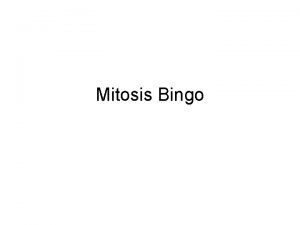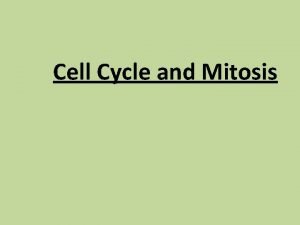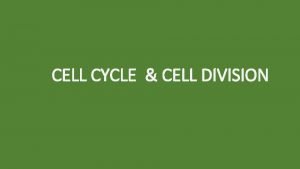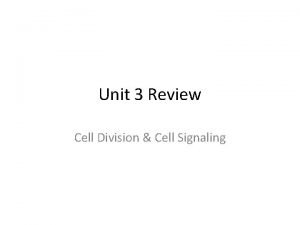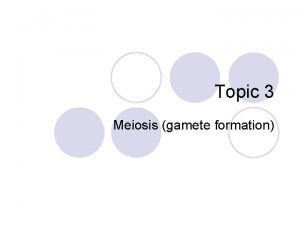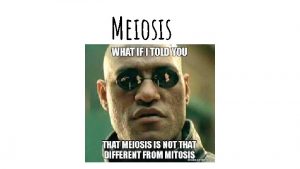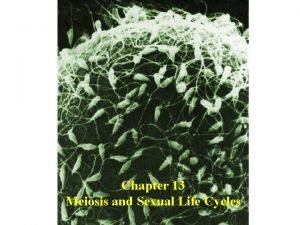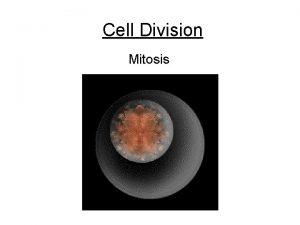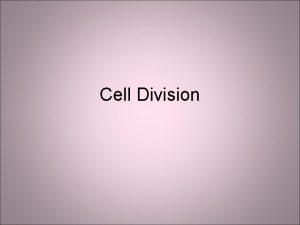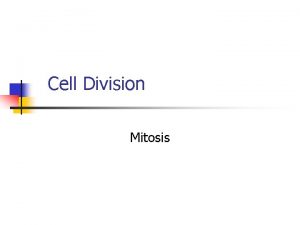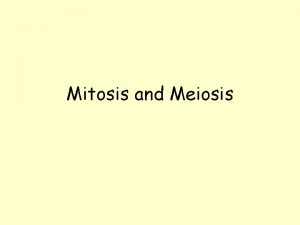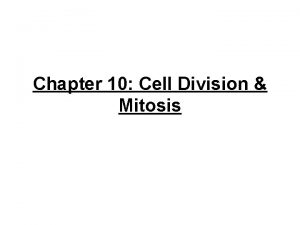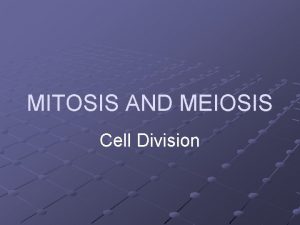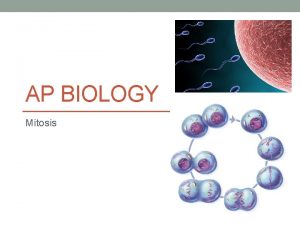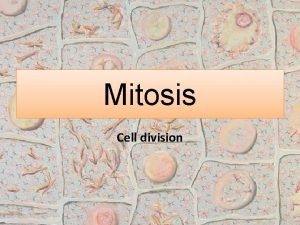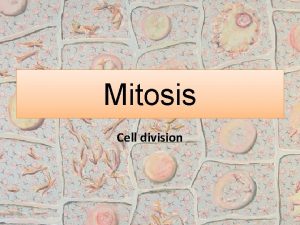Cell Division Mitosis Cell Division essential to the













- Slides: 13

Cell Division : Mitosis

Cell Division essential to the production of new cells for the purpose of growth, tissue repair and sexual reproduction

Interphase Cells spend most of time performing valuable functions This period when they are not dividing is called Interphase

DNA Replication Before dividing-DNA replication - Duplication of DNA in nucleus - DNA double helix unwinds, splits into two strands (like a zipper)


Cell division: - DNA strands coil & condense - Form rod-like structure called Chromosomes - shaped like an “X” - 2 rods (chromatid) joined at centre (rods exact copy of the other) - Chromosomes form pairs (one with genetic info. From Mother, the other from Father)

# of chromosomes different in each species Human contain “ 2 n” where n represents number of pairs Humans : n=23, so we have 23 pairs of chromosomes so 2 n=46 total chromosomes other creatures: Dogs : 2 n=78, Cats: 2 n=38 Fruit Fly: 2 n= 8

Human Genome Contains 23 pairs of chromosomes First 22 homologous (same size) - 23 rd pair -sex chromosomes (determines gender) Ex. Males XY, Females XX

Human Genome (Karyotype)

Two types of cell division: 1. Mitosis: the process of cell division in which cells multiply in order to ensure growth and tissue repair. - increases number of cells & replaces dead or worn cells - Parent cell (original cell) divides producing 2 identical daughter cells - forms diploid cells (2 n: two sets of chromosomes) - Somatic cells: cells that form tissues(not gametes)

All Diploid cells are somatic (form tissues in body) - Consists of 4 phases: Prophase Metaphase Anaphase Telophase (see p. 134)

Diploid (2 n)



